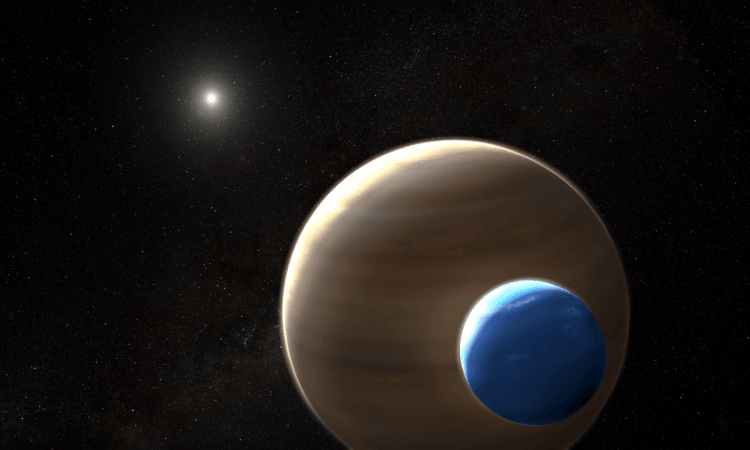
Astronomers may have at last discovered an exomoon, or a moon circling an exoplanet—planets from other star systems. The first discovery is a giant one.
The new exomoon is about the size of Neptune, which has a diameter four times bigger than Earth's and is 17 times as enormous. Astronomers at Columbia University, David Kipping and Alex Teachey, were involved in this discovery.
To spot exoplanets, astronomers look at their host stars, and wait for a planet to pass between the starlight and observers on Earth. When a star's brightness plunges, it means that a planet is passing it. Usually, just expansive planets that circle close to stars can be seen, and those sorts of planets ordinarily don't have moons.
So Kipping and Teachey studied the information from NASA's Kepler space telescope, an exoplanet chasing satellite. They took a gander at exoplanets with the most stretched out orbits, or those that take around 30 days to circle their stars. That limited their focus to 284 planets. But only one of them, Kepler 1625b, demonstrated the kind of properties that they were searching for—a couple of unforeseen variations from the norm.
Kepler 1625b was found to start its orbit over an hour early, a marker that something with generally solid gravity is pulling on it, substituting its focal point of gravity and influencing its orbit.
Once the planet completed its orbit, astronomers watched another decline in brightness for around 3.5 hours. Kipping explained it as, "a moon trailing the planet like a dog following its owner on a leash."
All of this makes sense if a huge Neptune-sized moon is orbiting Kepler 1625b. This would be the first moon found outside the Solar System, as indicated by a new study distributed in the journal Science Advances.
"We hope to re-observe the star again in the future to verify or reject the exomoon hypothesis," Kipping told Space.com. "And if validated, the planet-moon system—a Jupiter with a Neptune-sized moon—would be a remarkable system with unanticipated properties, in many ways echoing the unexpected discovery of hot Jupiters in the early days of planet hunting."

















